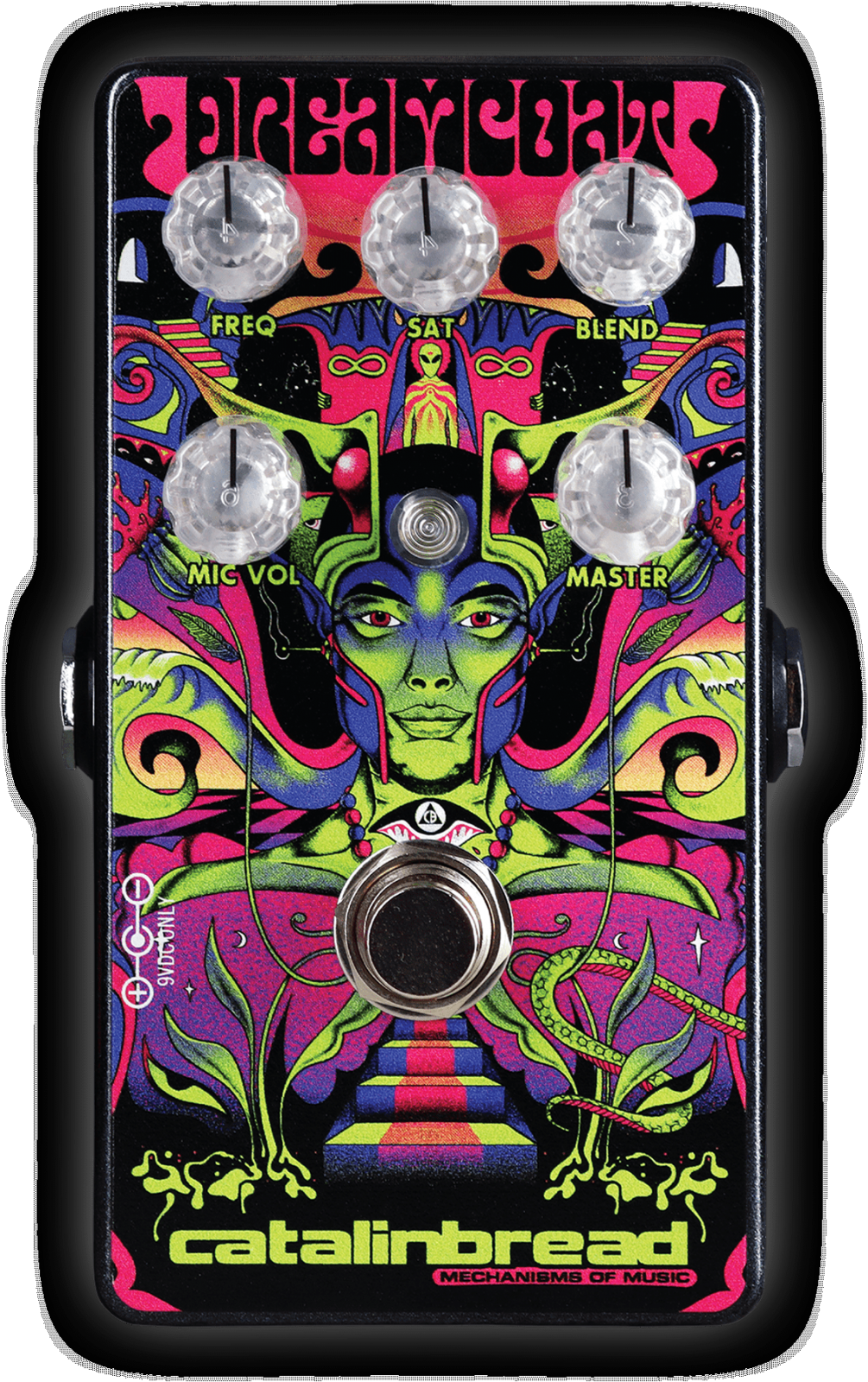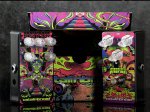
Catalinbread DREAMCOAT/SKEWER Special Edition Box
STREET PRICING: $299.99 for the set. $359.98 value.
NAME: DREAMCOAT/SKEWER Special Edition Box
TYPE: The DREAMCOAT is a pre-amp/overdrive pedal and the SKEWER is a refined treble boost.
RELEASE DATE: June 23rd for the combo box and July 21st for the individual pedals
UPC: 853710004833
QUICK PITCH: The tools that inspired Ritchie Blackmore have been recreated to inspire you.
TOTAL BOX WEIGHT: 1.38 lb
BOX DIMENSIONS: 6.5" X 5.5" X 2.5"
The TP-1011 was originally designed to accept a microphone input. Microphones operate at as low as -60dBu, and guitars 20dBu higher, so a guitar signal naturally overloaded the front end, creating its signature distortion. Unlike the original Aiwa unit that runs at 18V, the circuit didn’t really do the amp-melting thing until I increased the operating voltage to 20V, and so that’s where we stand. The 20V operating voltage is supplied via a shunt-regulated charge pump, so plugging a standard 9V power supply into it does the trick.
When you adjust the Blend control, keep in mind that the “clean” sound is actually whatever you feed into the Dreamcoat, so running another pedal up front will allow you to blend the signals in parallel. This is a boon for you gain stackers out there, or you can get creative with it---try plugging in a ADT pedal or a subtle chorus up front and backing off the Blend control to let your cleans really jump out.
Current draw: 44mA
Input impedance: >1MΩ
Output impedance: <5KΩ
Dimensions: 4.33” X 2.36” X 1.93”
Weight: 0.4 lbs
The Dreamcoat requires a 9V power supply center-negative and draws 44mA. Any more current than that is A-OK, but you can’t exceed 9V without letting the smoke out. Bad things will happen, including but not limited to shouting expletives and more importantly, voiding your warranty.
FREQUENCY TRIMMER: Blackmore had his passive “boost” tailored to the resonant frequency of his Strat, accentuating pinch harmonics. While you may not play the man’s actual guitar (seriously, props if you do), you may want to spend some time dialing this in. This is definitely a “set-it/forget-it” type of control, as you dial it to suit your guitar best. Of course, you can experiment with different frequencies and let the FREQ knob do the talking.



